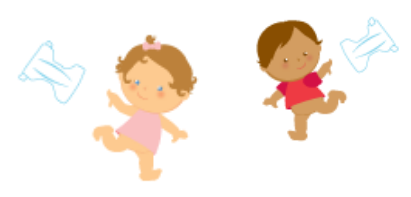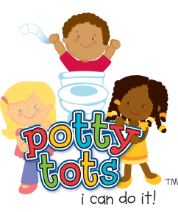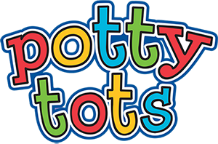Tips & FAQS


At what age should I introduce potty training to my child?
It is not so much a matter of age to determine when to introduce potty training, rather a matter of when your child shows signs of readiness. Every child is different and potty training is no exception. Starting potty training too early can lead to frustration and negative experiences for children and parents. Children will only be successful when they are developmentally ready to begin the process.
As a general guideline, reports from the American Academy of Pediatrics indicate that only after the ages of 18 months to 24 months do children begin to have the cognitive, emotional and physiological developmental skills to begin potty training. And it is important to remember that a child may reach one or more of these developmental stages at different times, and therefore, may not be ready for potty training.
In short, children need to not only be capable of understanding what they are to be doing and why, but also their bodies need to be developed enough to be able to control their bladders and bowel movements. Emotionally, they need to be ready to want to start potty training and not be afraid of this new process.
The average age for potty training is between 2 and 3 years old. Some children may not be ready until the age of three or more. Some believe there is a difference in the age of readiness based on gender. Again, it is an individual process and the best way to know if your child is ready is to monitor their elimination progress (bladder and bowel) and see if your child shows an interest in potty training.
How do I know that my child is ready to begin training?
Your child may be showing signs of readiness for potty training when:
- They show curiosity about the bathroom or want to see what you are doing in the bathroom.
- You notice your child remains dry for a few hours, which shows they are starting to be able to control their bladder.
- Their bowel movements become consistent.
- You can see that your child is aware that they are about to urinate or have a bowel movement. (squatting, grunting, hiding to go to the bathroom or making faces as they realize they have to go)
- They start to be bothered by diapers or being wet or soiled.
What methods or programs are the most effective at teaching Potty training?
There are many methods and programs available for potty training. The one that will work best for your child is the one that is suited to his/her individual stage of development and learning style. As with any learning, the teacher or parent needs to assess what will work best for motivating the individual child.
The most important thing to remember is that Potty Training needs to be a POSITIVE and FUN experience. There should never be any punishment, negative comments or berating involved.
Some of the most widely used methods are:
- Modeling (with either a doll or having the child watch you in the bathroom)
- Potty Training books and charts that “show” the child the steps of potty training
- Progress charts to encourage and motivate children to want to use the potty
What kinds of rewards work best for potty training?
Parents have different ideas about rewards and they know what will and won’t work for their individual children. Experts agree that the best reward for a child is the self esteem that comes from accomplishment and independence.
Praise and hugs are the best way to show that you are proud of these accomplishments. Children, in turn, feel proud of themselves and this feeling shows.
Many parents agree that children like to receive a tangible reward. It is best to keep the rewards small or children may come to expect something bigger and better every time they go to the bathroom. It is also a good idea to use praise consistently and use some sort of a progress chart to show how many times the child has been successful. You can then offer a small reward such as a sticker or let the child put a sticker or cling on the chart. Children love this kind of incentive because they enjoy keeping track of their own success. They are also motivated by seeing their progress and moving toward a goal.
Then perhaps offer another reward, such as a small toy or treat, for every 3-4 times they are successful. This will show them that they are really working toward a goal and they won’t come to expect a reward every time they go. This will also build self esteem, confidence and pride in their accomplishments. (I can do it!) Eventually, going to the bathroom will become a habit and the tangible rewards will diminish until they are not necessary anymore.
Listed below are some of the rewards that have proven to be effective:
- Praise (hugs, positive comments)
- A Potty Chart with stickers
- Small ”prizes” (stickers or toys)
- Treats
- Special activities/outings
How long will it take to potty train my child?
Keeping in mind that every child is different and there is no magic formula to figure this out, The AAP studies show that, generally speaking, the average time is about 6 weeks. However, this number depends on the individual child and the consistency of the parents’ methods. Remember that potty training is a process and there will be setbacks and you need to be flexible and not force this training on your child or they may rebel and make the process difficult and unproductive.
What if my child has a setback or accident after potty training?
As in any “training” or learning, it will take a lot of practice to master a skill. Always reassure your child that accidents are expected and never get angry with your child over an accident or a set back (like having to return to diapers or start potty training at later date.) If a child feels shamed, they cannot perceive this as a positive experience and it may result in low self esteem or an aversion to potty training
Potty Training Tips
- Don’t start potty training until your child shows signs of readiness. Remember, every child is different and will be ready in their own time.
- It is important to keep track of how often your child goes to the bathroom. Reminding them to take a potty break every half hour or so will help them make the connection between the feeling that comes when they need to go potty and getting to the potty.
- Always approach potty training with a POSITIVE attitude.
- As with any behavior you are trying to encourage, be CONSISTENT in your methods and rewards.
- Expect setbacks and don’t show disappointment or anger. Show your child that it is okay to have an accident, that it is expected when you are potty training or learning anything new.
- Make the process FUN! Let your child decorate “their bathroom” or potty chair, read books about others who are going through the same process of potty training, watch videos, make the time in the potty fun by playing games and singing songs etc…
- Be supportive and always show a lot of praise. Kids at this stage naturally want to please their parents. Hugs and positive saying such as, “I am so proud of you!”, “Good Job!”, “You did it!” or even “Good try”, or “You’ll do better next time.” are one of the best rewards your child can receive
*This information is not intended to replace medical advice and you should seek such advice from a qualified pediatrician who can assess your child on an individual basis.
References and Recommended Readings:
American Academy of Pediatrics Guide to Toilet Training
Johnson’s Everyday Baby Care Potty Training
Tips from Real Moms and Dads
Coming Soon
